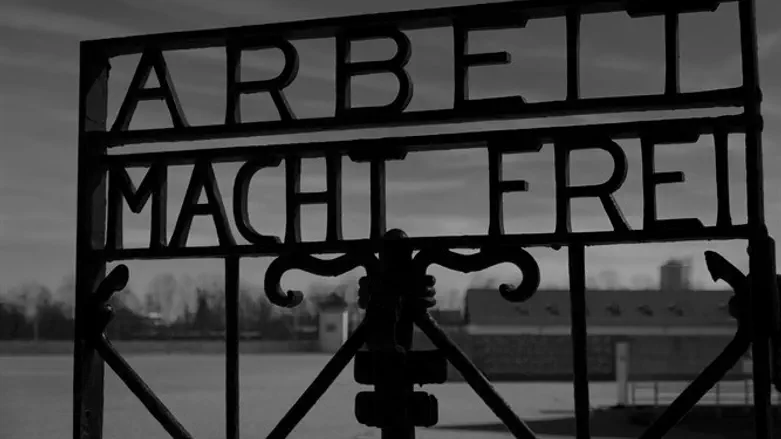
Dr. Rafael Medoff is founding director of The David S. Wyman Institute for Holocaust Studies, and the author of more than 20 books about the Holocaust, Zionism, and American Jewish history. His latest book, The Jews Should Keep Quiet: President Franklin D. Roosevelt, Rabbi Stephen S. Wise, and the Holocaust, will be published later this year by The Jewish Publication Society.
You wouldn’t think it would be necessary, in this day and age, to explain to a member of the U.S. House of Representatives that there is no Dachau in Texas, no Bergen-Belsen in Arizona, and no Buchenwald in New Mexico.
Yet it seems that is the level to which some of the combatants in America’s overheated immigration debate have stooped. In an Instagram video and several follow-up tweets this week, Rep. Alexandria Ocasio-Cortez (D-NY) asserted that the U.S. detention facilities along the border with Mexico are “exactly the same” as “concentration camps.”
The term “concentration camp” is so widely associated with the Nazi-era camps that the Merriam-Webster dictionary definition of the term actually specifies that it is “used especially in reference to camps created by the Nazis in World War II for the internment and persecution of Jews and other prisoners.”
In case anybody doubted that Rep. Cortez was alluding to the Nazi camps, she also invoked a slogan that is popularly associated with the Holocaust: “If that doesn’t bother you,” she declared, “I want to talk to the people that are concerned enough with humanity to say that ‘never again’ means something.” The words “Never Again” are prominently displayed in the exhibits of the United States Holocaust Memorial Museum and other Holocaust museums around the world.
In response to widespread criticism of her statements, Congresswoman Cortez and her supporters insisted that she was referring “only” to concentration camps and not to death camps.
Let us differetiate:
-The primary purpose of Nazi death camps, such as Auschwitz and Treblinka, was to carry out the mass murder of Jews.
-Nazi concentration camps, such as Dachau, Bergen-Belsen, and Buchenwald, held a variety of inmates—Jews, political prisoners, and others—who were not sent there specifically to be killed, but were subjected to slave labor, disease, brutal beatings, systematic torture, ghoulish medical experiments, and starvation-level diets.

President Obama described how the U.S. troops who reached Buchenwald concentration camp encountered “piles of bodies and starving survivors.” He called it a place “where the prisoners suffered under...the most unimaginable conditions.” President Barack Obama visited the site of the former Buchenwald concentration camp on June 4, 2009. A great-uncle of his served in the U.S. army’s 89th Infantry Division, which liberated one of Buchenwald's sub-camps.
President Barack Obama visited the site of the former Buchenwald concentration camp on June 4, 2009. A great-uncle of his served in the U.S. army’s 89th Infantry Division, which liberated one of Buchenwald's sub-camps.
In his remarks at the site, President Obama described how the U.S. troops who reached Buchenwald encountered “piles of bodies and starving survivors.” He called it a place “where people were deemed inhuman because of their differences” and where the prisoners suffered under “the most unimaginable conditions.”
An estimated 56,000 prisoners were murdered in Buchenwald between 1937 and 1945. At least 50,000—including Anne Frank and her sister Margot—were killed in Bergen-Belsen. Tens of thousands were murdered in Dachau. Does that sound “exactly the same”—or even remotely similar—to the conditions in the detention facilities in Texas, Arizona, or New Mexico?
Last December, the U.S. Holocaust Memorial Museum issued a press release consisting of an essay by one of its staff historians, Edna Friedberg, titled “Why Holocaust Analogies Are Dangerous.” She criticized “American politicians” and others who “casually use Holocaust terminology to bash anyone or any policy with which they disagree.” Among others, she challenged the critics of U.S. border detention policies for using “sloppy” and “grossly simplified” analogies.
Friedberg argued that such comparisons not only “demean the memory of the dead” but are outright “dangerous,” because they “exploit the memory of the Holocaust as a rhetorical cudgel” in order to “shut down productive, thoughtful discourse” and “distract from the real issues challenging our society.”
Curiously, however, another historian at the museum, Rebecca Erbelding, has been defending Rep. Cortez’s statements. This week, Erbelding re-tweeted a series of messages praising Cortez’s concentration camp analogy. Next to one of the endorsements of the Cortez statement, Erbelding added the words “A Geppetto Checkmark”—referring to the label bestowed by Washington Post fact-checker Glenn Kessler on controversial statements that at first appear to be false or exaggerated, but turn out to contain “the truth, the whole truth, and nothing but the truth.” Perhaps Erbelding needs to have a conversation with her colleague Edna Friedberg.
Reasonable people can disagree about the detention policies of the current administration, or the policies of its predecessors. But it's not reasonable to compare those U.S. facilities to places where tens of thousands of people were tortured, starved, and beaten to death. There is no Dachau in Texas.